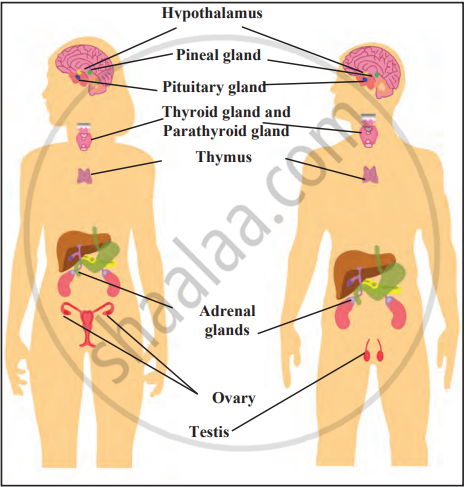Topics
Heredity and Evolution
- Heredity or Inheritance
- Protein Synthesis
- Transcription, Translation and Translocation
- Protein Synthesis
- Protein Synthesis
- Organic Evolution
- Theories of Origin of Life
- Evolution and Classiffication
- Evidences for Biological Evolution
- Darwinism
- Lamarck’s Theory of Evolution
- Speciation
- Human Evolution
Life Processes in Living Organisms Part -1
- Living Organisms and Life Processes
- Living Organism and Energy Production
- Formation of ATP
- Energy Production in Living Organism
- Cell Division: an Essential Life Process
- Mitosis and Its Phases
- Phases of Mitosis: Karyokinesis (Division of Nucleus)
- Phases of Mitosis: Cytokinesis (Division of Cytoplasm)
- Significance of Mitosis
- Meiosis as a Reduction Division
- Stages of Meiosis: Meiosis I
- Stages of Meiosis: Meiosis II
- Significance of Meiosis
- Differences Between Mitosis and Meiosis
Life Processes in Living Organisms Part - 2
- Introduction to Life Processes in Living Organisms
- Asexual Reproduction in Animal
- Fission
- Fragmentation
- Regeneration
- Budding
- Sporulation (Sporogenesis)
- Asexual Reproduction in Plant
- Budding
- Vegetative Reproduction
- Reproduction
- Sexual Reproduction in Flowering Plants
- Sexual Reproduction in Animals
- Human Reproduction
- The Male Reproductive System
- The Female Reproductive System
- Gametogenesis
- Fertilization in Human
- Embryonic Development in Human
- Implantation in Human
- Pregnancy in Humans
- Placenta (Growth) in Human
- Parturition (Birth) in Human
- Menstrual Cycle (Ovarian Cycle)
- Reproduction and Modern Technology
- Reproductive Health
Environmental Management
- Our needs and the Environment
- Ecosystem
- Structure and function of an Ecosystem
- Relationship Between Environment and Ecosystem
- Environmental Balance
- Environmental Conservation
- Environmental Conservation and Biodiversity
- Endangered Species
Towards Green Energy
- Energy and Use of Energy
- Generation of Electrical Energy
- Heat Energy (Thermal Energy)
- Nuclear Energy
- Natural Gas Energy
- Electric Energy Generation and Environment
- Hydroelectric Energy
- Wind Energy
- Solar Energy
- Solar Energy
Animal Classification
- Biological Classification
- Classification of Living Organisms
- Taxonomic Hierarchy of Living Organisms: Unit of Classification
- New Criteria for Basis of Classification
- History of Animal Classification
- Traditional Method of Animal Classification
- Five Kingdom Classification
- Phylum: Porifera
- Phylum: Cnidaria/Coelenterata
- Phylum: Platyhelminthes
- Phylum: Aschelminthes
- Phylum: Annelida
- Phylum: Arthropoda
- Phylum: Mollusca
- Phylum: Echinodermata
- Phylum: Hemichordata
- Phylum: Chordata
- Kingdom Animalia
- Chordata: Vertebrata
Introduction to Microbiology
- Microorganisms (Microbes) and Microbiology
- Applied Microbiology
- Industrial Microbiology
- Useful micro-organisms
Cell Biology and Biotechnology
- Cell Biology (Cytology)
- Stem Cells
- Organ Transplantation
- Organ and Body Donation
- Biotechnology
- Commercial Applications of Biotechnology
- Modern Agricultural Practices and Crop Improvement
- Important Stages in Agricultural Development
Social Health
- Social Health
- Factors Disturbing the Social Health
- Communication Media and Excessive Use of Modern Technology
- Stress Management
Disaster Management
- Disaster
- Effects of Disaster
- Nature and Scope of Disaster
- Disaster Management
- Classification of Disaster Management
- Disaster Management Cycle
- Structure of Disaster Management Authority
- First Aid and Emergency Action
- Mock Drill
Life's Internal Secrets
The Regulators of Life
- Coordination in Plants - Introduction
- Control and Co-ordination in Plants
- Human Nervous System
- Central Nervous System (CNS)
- Chemical Control
The Life Cycle
Mapping Our Genes
Striving for Better Environment 2
- Use of Efficient and Eco-friendly Technology
- Sustainable Use of Resources
- Enforcement of Acts, Laws and Policies
Understanding Metals and Non-Metals
Amazing World of Carbon Compounds
- Introduction
- Role of Endocrine Glands and Hormones
Introduction:
Our body uses chemical substances called hormones to regulate and coordinate various activities. Hormones are produced by special organs called endocrine glands, which are also known as ductless glands because they lack storage or transport systems for their secretions. As soon as hormones are produced, they are directly released into the bloodstream, allowing them to travel to all parts of the body.

Endocrine glands
Role of Endocrine Glands and Hormones:
The endocrine glands work along with the nervous system to manage the body’s control and coordination. While the nervous system transmits fast and short-lived signals through electrical impulses, hormones act much more slowly but produce long-lasting effects. This makes the endocrine system essential for processes that require sustained regulation, such as growth, metabolism, and reproduction.
Examples of Hormonal Action,
To ensure that hormones are effective, they are secreted only when needed and in the right amounts. There is a built-in mechanism in the body that regulates hormone production. For example:
- When blood sugar levels rise after eating, certain cells in the pancreas are stimulated.
- In response, these cells release a hormone called insulin into the blood.
- Insulin helps lower blood sugar levels by facilitating the absorption of glucose into cells.
This mechanism ensures that the body maintains balance and functions efficiently. Comparison Between Nervous System and Endocrine System:
- Speed: Nerve impulses act quickly, while hormones work more slowly.
- Duration: Effects of nerve impulses are short-lived, but hormonal effects last longer.
- Mode of Action: The nervous system uses electrical signals, whereas hormones are chemical messengers carried by the blood.
